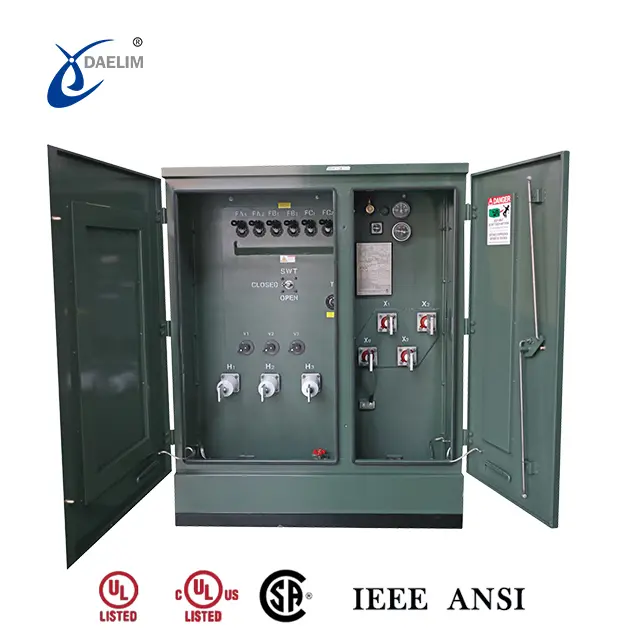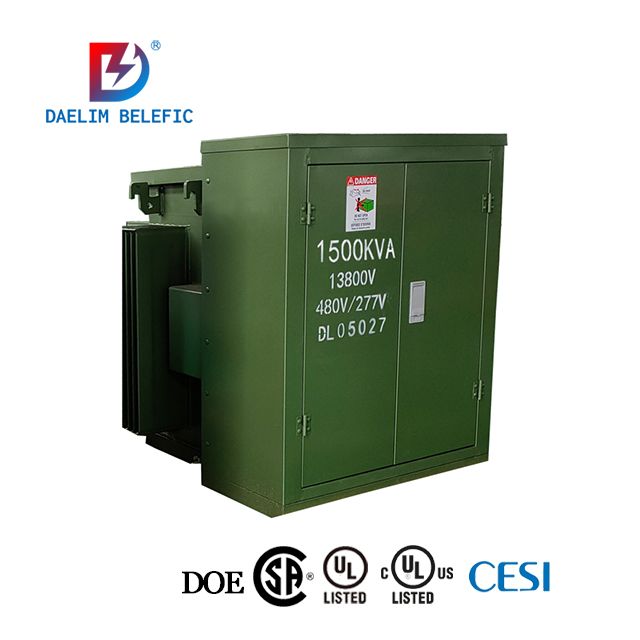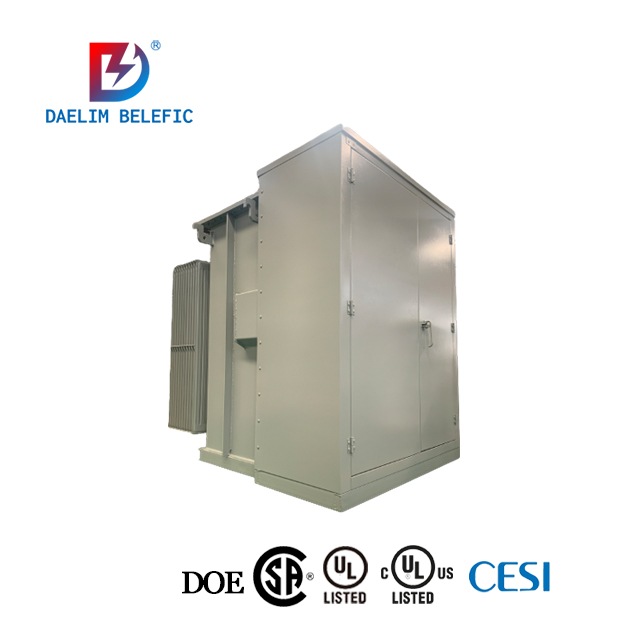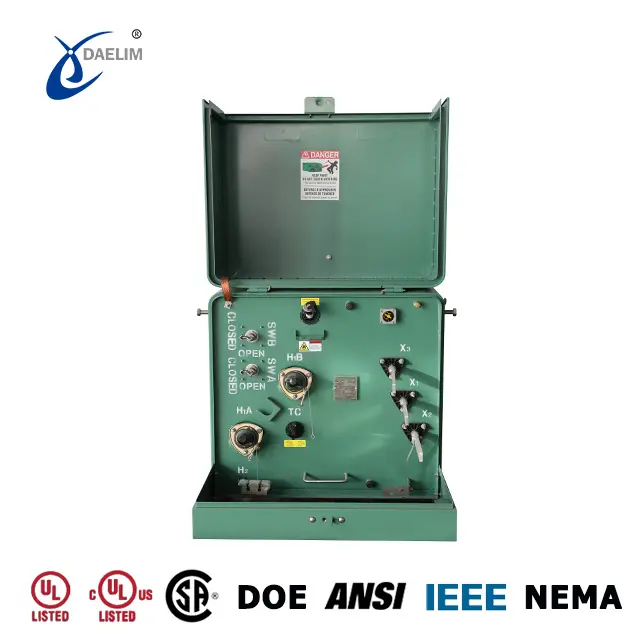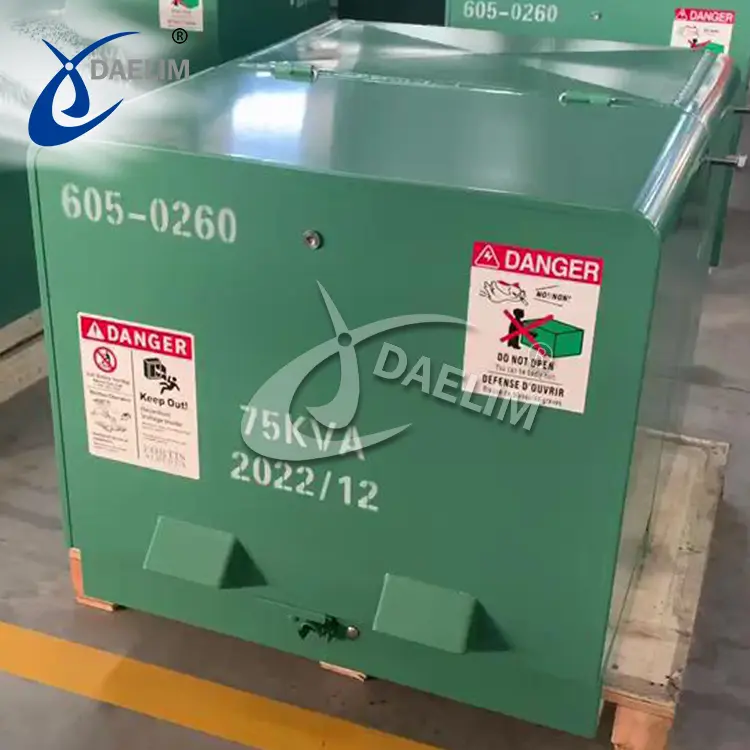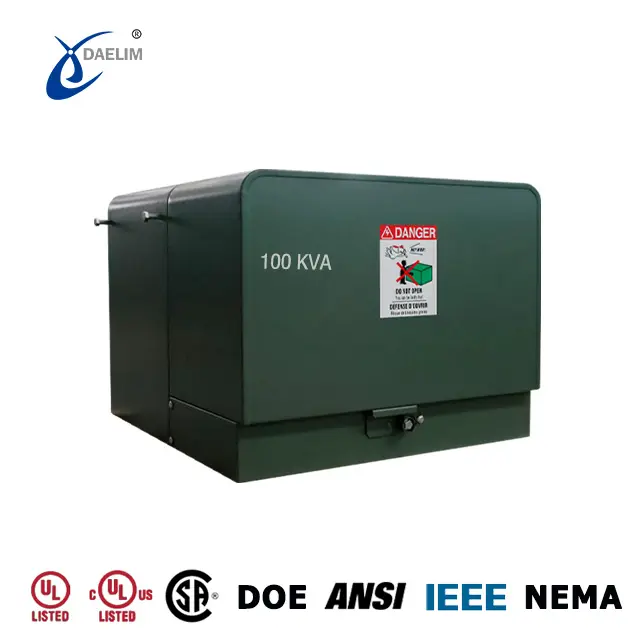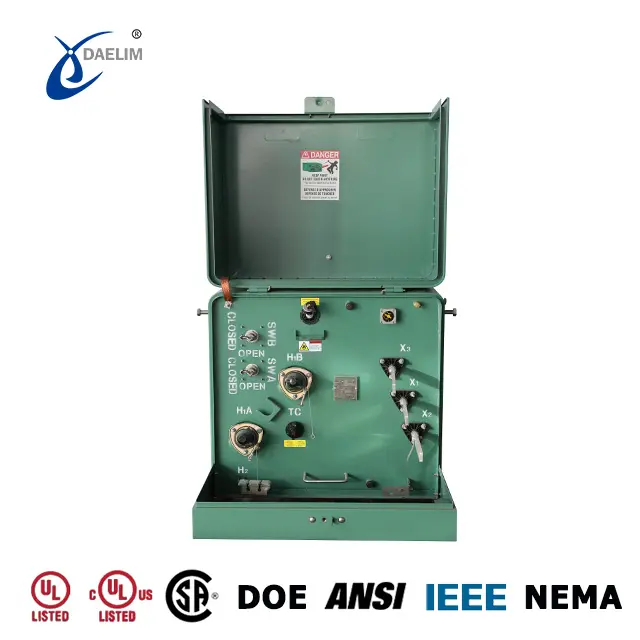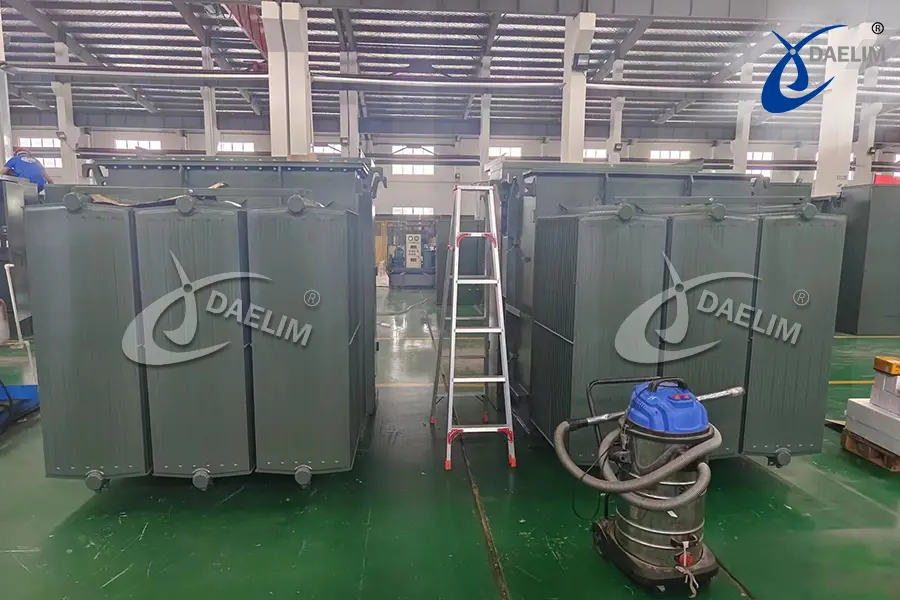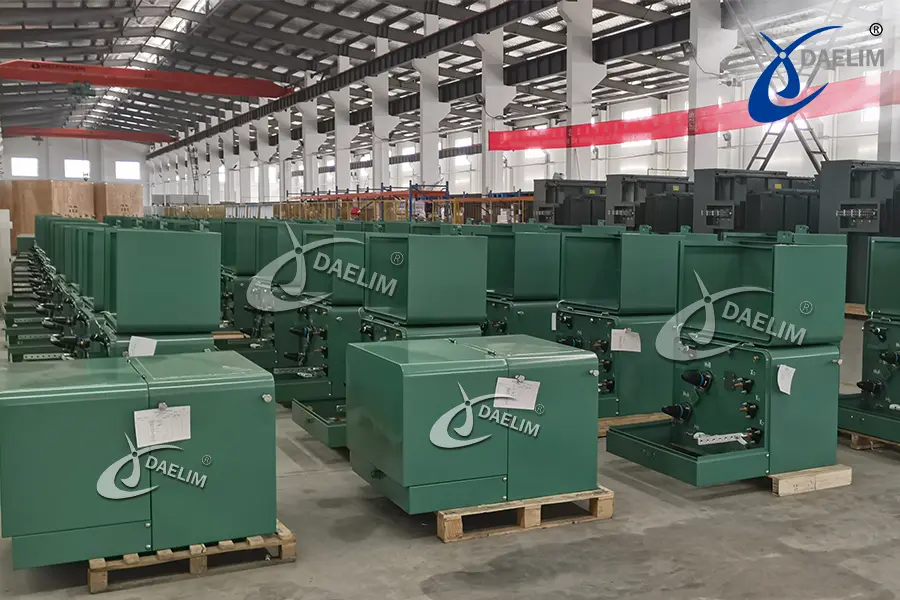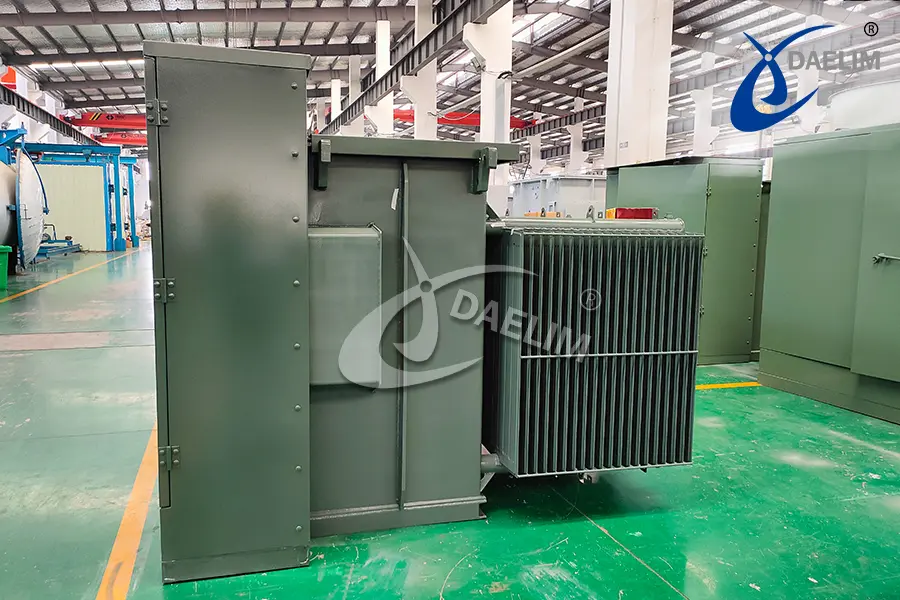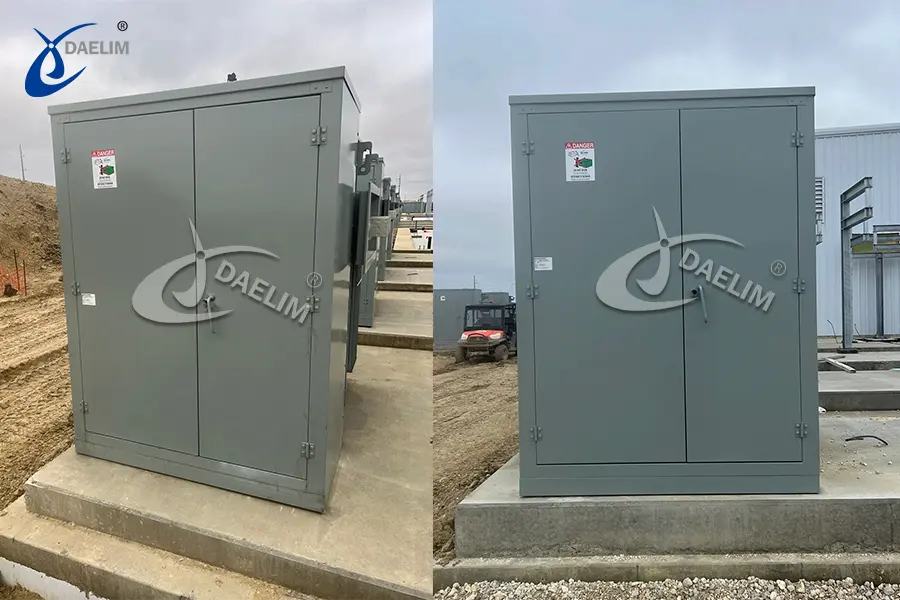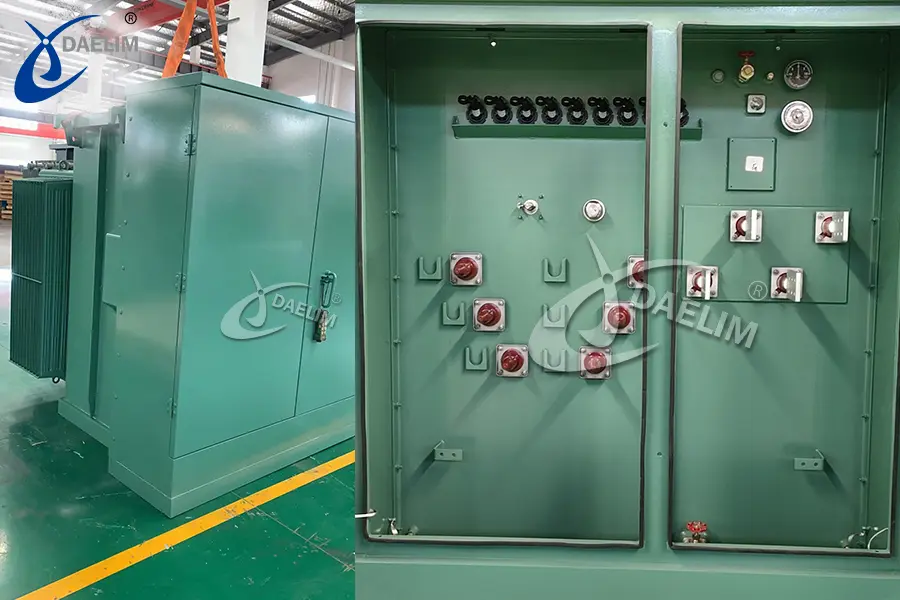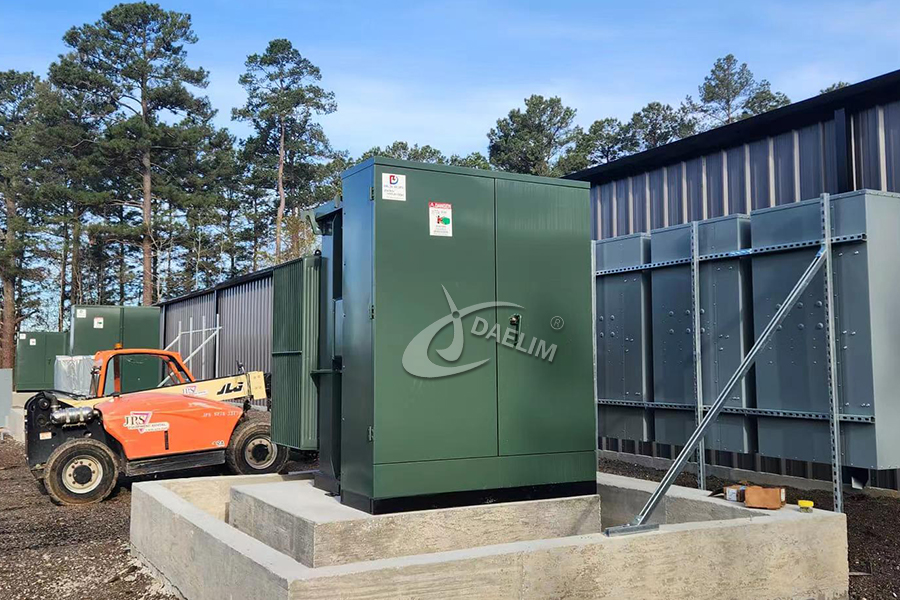The Ultimate Guide to Dead Front Transformers
The dead front transformer is a type of pad-mounted transformer commonly used in North and South American markets.


Daelim Transformer is a professional manufacturer specializing in ANSI/IEEE and CSA Std pad-mounted transformers. Their professional technical team is capable of designing both dead front and live front transformers that fully adhere to ANSI/IEEE, DOE, CSA, and other international standards. Daelim Transformer holds various transformer test reports from SGS, CESI, IEEEC 57, IEC60076, CSA C227.3, CSA C227.4, and CSA C227.5, as well as UL and cUL certificates. Their quality and expertise have earned recognition from numerous professional customers in the United States and Canada, including long-term collaborations with top 500 companies in North America.
What is a dead front transformer?
A dead front transformer is a pad-mounted transformer that features fully enclosed electrical connections and components, ensuring that there are no exposed live parts or terminals on the front panel. This design enhances safety by preventing accidental contact with energized elements. Dead front transformers are commonly used in outdoor applications for secure electrical power distribution.
Learn more: 3 Phase Pad Mounted Transformer-Daelim Belefic
"Post-death transformer" is the radial feed that seals the high voltage bushing and current-carrying parts of the transformer with rubber material. It is usually composed of a bushing well, a break load insert,s, and a break load elbow, so it is completely insulated. Safety improvements that do not expose load current elements.
There are two kinds of the transformer before dead front transformer, one is loop feed, and the other is radial feed. The three-phase loop feed transformer is composed of 6 high voltage bushings, and the three-phase RF is 3 high voltage bushings. The single-phase dead-front transformer has two high voltage bushings. You can choose according to your actual needs.
The transformer uses the backup fuse and the Bay-O-Net fuse in series to provide protection, the backup fuse is installed in the box inside, only in the pad-mounted transformer internal phase fault action used to protect the high voltage line, and the Bay-O-Net fuse in the secondary side short circuit or overload when the fuse.
Learn more about Pad Mounted Transformer Fuse
The high voltage cable is connected to the bushing with good insulation performance, the bushing is connected to the elbow-type cable plug, and the live part is sealed. The elbow-type cable plug is a fully shielded insulation plug, which can be inserted and removed with full load, equivalent to the load switch, Its dead front structure is shown below, but if it is closed to the breaking point, both the elbow-type plug and the bushing should be replaced.
Are dead front transformers fully insulated?

My experience is that pad mounted transformers and their definitions are easy to understand. If you open the second side, you'll see an exposed busbar, which is a charged front end. If you see an insulated elbow joint, that's a blind spot.
In general, "live front" means "power on," "easily," "death," and "trying to kill the" pry "from the" master."
The live front transformer has the power supply on it and the primary cable is exposed, whereas the dead front transformer without power supply has an insulated elbow.
Read more: What is a Live Front 25kv Pad-Mounted and Substation Transformer Specification?
What are the types of dead front transformers?
There are two types of dead-front transformers. Single-phase and three-phase transformer
Three-phase dead front transformer

This pad-mounted transformer is commonly used in underground power systems with a three-phase power supply. According to CSA Std, the maximum width of the transformer should not exceed 1730mm. When opening the high voltage door, you will find six(also can be 3) high voltage bushing wells along with load break bushing inserts or surge arresters. The high voltage bushings in this structure are separate, fully insulated, and provide reliable safety.
Try for free: Three Phase Pad Mounted Transformer
Single phase dead front transformer

This type of pad-mounted transformer is primarily used in underground single-phase power systems. It features two high-pressure cased wells and two load break bushing inserts. Single-phase dead-front transformers are typically installed in parks, hotels, and single-family houses to provide lighting and power supply for electrical equipment.
Learn more: Single Phase Pad Mounted Transformer
What is the difference between single-phase and three-phase dead front transformer?

The main difference between single-phase and three-phase dead front transformers lies in their structure and functionality. In a three-phase transformer, both the high and low voltage sides require three coils connected in specific ways known as connection groups. This enables the transformer to provide the necessary power to users. On the other hand, a single-phase transformer only requires one coil on each side, connected respectively to the power supply and the load.
In terms of physical features, a three-phase dead front transformer typically has three or six high-voltage bushings on the high-voltage side, while a single-phase dead front transformer has only two high-voltage bushings. The cover of a three-phase transformer is commonly opened on the side, whereas the cover of a single-phase transformer is opened from the top.
The conventional capacity of three-phase dead front transformers can reach up to 5000kVA, whereas single-phase transformers have a conventional capacity of up to 250kVA. Both types can operate at voltage levels up to 34.5kV.
In terms of construction, the iron core of a three-phase transformer is typically a flat "day" type, providing three magnetic circuits for the three-phase electricity. Conversely, the iron core of a single-phase transformer is a "mouth" type, featuring only one magnetic circuit.
Try for free: 8+FAQ About Pad Mounted Transformers
What are the loop feed transformer and the radial type feed transformer difference?
Pad mounted transformer can be divided into the radial and loop feed types according to their purpose. radial type mainly distributes electric energy to low voltage power users. The loop feed type is also used for ring network function and power distribution, Loop feed type generally has more than two incoming lines.
Loop feed and radial type pad mounted transformer difference is mainly reflected in the high voltage inlet and outlet, loop feed type transformer in addition to the high voltage outlet of the transformer itself, there is another high voltage outlet, the formation of loop feed type power supply; Radial feed pad-mounted transformer has only the high voltage outlet for its transformer.

Loop feed type pad-mounted transformer allows users to obtain power from two directions. The power supply network is usually connected to a ring to provide stability to the power supply. This power supply mode is referred to as ring power supply. Box substation with loop feed power supply is called ring box transformer, which is located at the middle-end of the bus trunk system.
Radial type pad-mounted transformer only appears for their own transformer high voltage, placed at the end of the busbar trunk system, relative to the loop feed pad-mounted transformer, the use of one inlet and outlet cabinet, and loop feed pad mounted transformer at least two outlet cabinet.
Loop feed type pad mounted high voltage using loop feed cabinet, the so-called ring network cabinet is each distribution branch set a switch cabinet, the switch cabinet bus is also a part of the loop feed trunk. The ring trunk is composed of the busbar connected by each outlet cabinet.
The number of loop feed transformer high voltage cabinets is more than that of radial feed pad mounted transformer, and the shell size of pad mounted transformer is larger, so the cost of loop feed transformer is much higher than that of radial feed transformer substation.
Try for free: Residential Transformer: The Small Green Box in the Neighborhood
What is the application of dead front transformer?
 The dead front transformer is a type of distribution transformer commonly utilized in power distribution systems throughout North America. It finds extensive application in various settings, including residential areas, shopping malls, industries, schools, secured mining facilities, skid pad-mounted substations, and more.
The dead front transformer is a type of distribution transformer commonly utilized in power distribution systems throughout North America. It finds extensive application in various settings, including residential areas, shopping malls, industries, schools, secured mining facilities, skid pad-mounted substations, and more.
One of its key features is the presence of high-voltage and low-voltage enclosed compartments, ensuring safe operation and preventing public accidents. The pad-mounted design makes it suitable for outdoor installations, with a medium-pressure termination and a lockable door. To counter the effects of ferromagnetic materials, the transformer employs a primary transformer as the power source.
The transformer comes in two main construction types: radial and ring networks. The radial configuration involves connecting the transformer to the primary power supply and cannot be used as a primary power grid structure. The ring network arrangement, on the other hand, allows the transformer to be connected to the primary power supply and provides electricity to other loads within the system.
Keep reading: Skid mount transformer solution with3 phase pad mounted transformer inside
Dead front transformer custom and for sale

Daelim is a top pad mounted transformer supplier in China. A professional technical team can design various standard dead-front transformers. The highest voltage level of conventional transformers is 34.5kV, and the power rating is up to 10MVA. Daelim's dead-front transformers can be customized according to your needs and technical parameters. The highest voltage level can reach 44kV, and the capacity can reach 10MVA. If you have transformer requirements or technical problems, you can contact the Daelim team to give you the most complete solution and a detailed price list.
Related Products
Related Article
2000 kVA Pad Mounted Transformers for Canadian Utility
Daelim Transformer is pleased to announce its contribution to a utility project in Toronto, Canada, involving the supply of two units 2000 kVA pad mounted transformers. These transformers are integral to enhancing the power infrastructure in the region. The project demands adherence to CSA standards, with a stringent delivery deadline of 10 weeks to meet the urgent needs of the client.
Supply of 37.5 kVA Single Phase Pad Mounted Transformers for Canadian Utility
Today, we are excited to introduce a project undertaken by Daelim Transformer aimed at supplying transformers to a Canadian utility. This project involves the delivery of 80 units of 37.5 kVA single-phase pad mounted transformers, specially designed to meet the utility's requirements. With a high voltage (HV) rating of 24940GRDY/14400 V and a low voltage (LV) rating of 240/120 V, these transformers are vital components in the utility's infrastructure.
1750 kVA Pad Mounted Transformer for the Dominica Market
Today, we're excited to present a transformer project tailored for the Dominican market. Our 1750 kVA pad mounted transformer is designed to meet the specific requirements of our clients in Dominica. This step-down transformer boasts a primary voltage of 13.8 kV and a secondary voltage of 480Grdy/277V, adhering to the IEEE C57.12.34 standard. With its robust features and reliable performance, this transformer is set to enhance the power distribution infrastructure in Dominica.
2600 kVA Pad Mounted Transformer for Cryptocurrency Mining
Daelim Transformer successfully provided three customized 2600 kVA pad mounted transformers to power a state-of-the-art cryptocurrency mining facility in Texas, USA. Our transformers were meticulously designed to meet the unique demands of the mining operation, ensuring seamless power distribution with unwavering reliability and efficiency.
2 MVA Pad Mounted Transformer for Utility
Behold the backbone of Canada's utility infrastructure—the 2MVA pad mounted transformer. With a primary voltage of 4160Grdy/2400V and a secondary voltage of 800GrdY/461V, this transformer stands as a testament to efficiency and reliability in power distribution. Crafted in strict accordance with CSA standards and CAN/CSA802.1 energy efficiency guidelines, it embodies the pinnacle of engineering excellence.
2600 kVA Pad Mounted Transformer For Crypto Mine In Kansas
This morning, I received the on-site photos of the pad-mounted transformers from the customer, and I was overwhelmed with excitement and joy. These pad-mounted transformers are installed at a 20MW crypto mining site in Kansas, USA. A total of 5 sets of 2600 kVA pad-mounted transformers, all UL-listed, are being deployed at this site. Currently, 3 sets have already been installed onsite and are scheduled to be powered on imminently.


